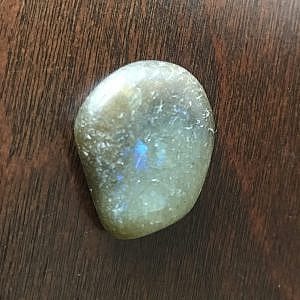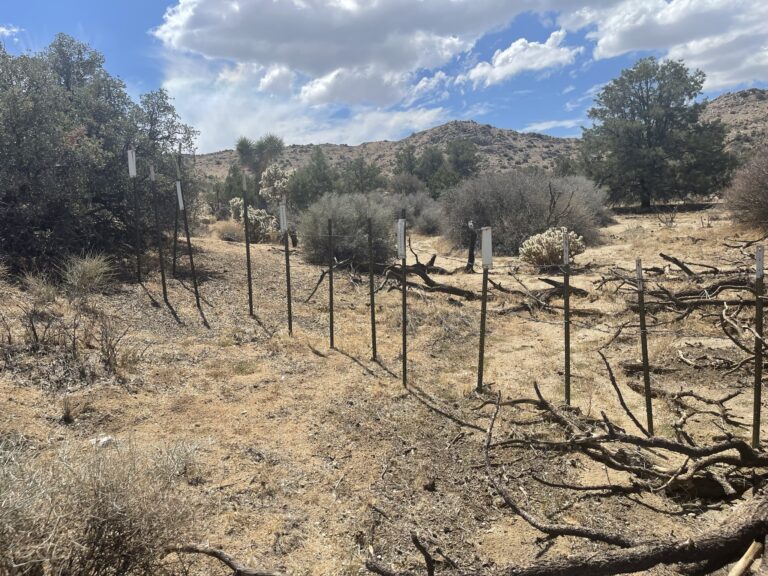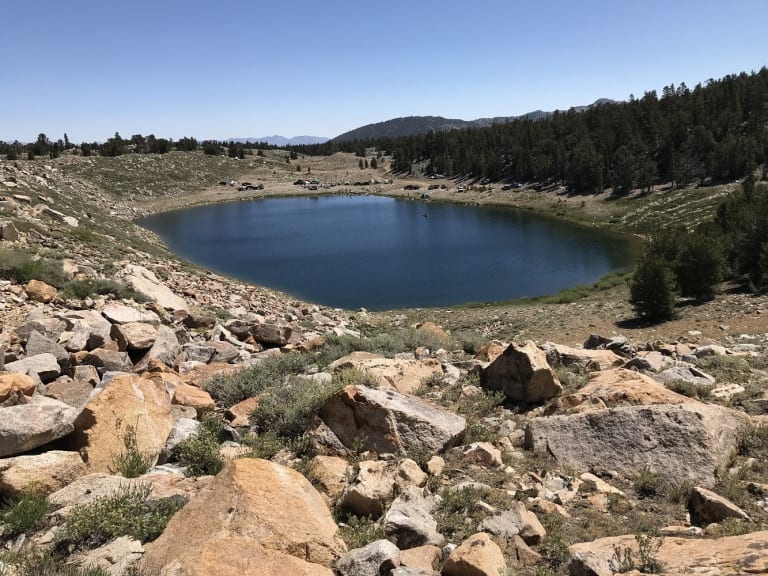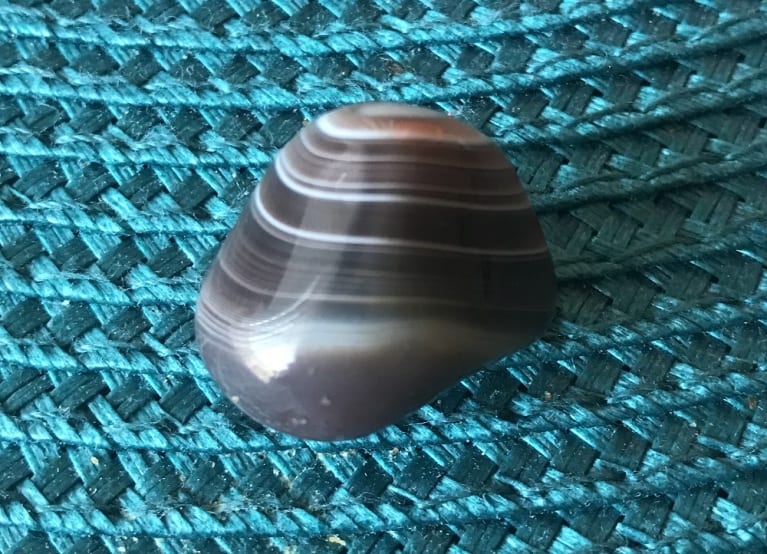Fire Opal Gemstone – Geology & Mineralogy Information
Fire Opal is an amorphous mineraloid comprising an accumulation of tiny hydrated silica spheres that produce a dominant reddish-orange spectrum upon light reflection. Although it is commonly misclassified as a “mineral,” fire opal is actually not a mineral because it does not have its own crystalline structure. In fact, all opals comprise different sized silica sphere-structures. And these size variations ultimately result in the variable spectrum of color when reflecting light. For instance, an accumulation of smaller-size microcrystalline silica spheres results in a blue-spectrum. And gem experts refer to this dominant color as Blue Opal. On the other hand, a slightly larger-size accumulation of silica substructures results in the red-orange spectrum, which is Fire Opal. Furthermore, both scenarios can exist within the same stone, which is what geologists sometimes refer to as a “Blue-Fire Opal.” Updated July 18, 2022.
Pronunciation of “Opal”
Opal Physical Properties
Although opal isn’t a proper mineral, professional geologists still perform physical-properties tests on the mineraloid in the same fashion as a mineral.
- Color: Variable with reddish-orange play as well as other spectrum colors
- Streak: White
- Luster: Subviteous; Translucent/Transparent; Opaque
- Cleavage: None
- Mohs Hardness Scale: 5.5 to 6.5
- Specific Gravity: 2.15 grams per cubic centimeter (g/cm3)
- Chemical Composition: Hydrated Silica (SiO2·nH2O)
- Crystal Structure: Amorphous (none)
- Fracturing Pattern: Conchoidal
What is Fire Opal?
Fire opal is any specimen of an opal gemstone that naturally displays a dominant red, orange, or yellow color. There are different types of fire opal that vary in play-of-color, background color, and origin. And fire opals are amorphous mineraloids that comprise hydrated silica (SiO2·nH2O). Opal itself lacks the structural organization necessary to form crystals. Thus, fire opals do not classify as minerals, nor are they considered sedimentary, igneous, or metamorphic rocks.
History and Culture of Opal
As indicated by archeological discoveries, historians believe opals were first mined in East Africa, at or around the Bronze Age. Some regions of modern-day Ethiopia are reportedly the earliest mining locations for Fire Opal, and currently remain an abundant source. Other major mining operations exist in Australia, Mexico, and the United States. But the marketing demand for opal has been captivating buyers and traders since the eras of the Roman Empire. In fact, the Ancient Romans called it “opalus” meaning “precious stone.” And it is presumed the Romans were the first to truly monetize opal types.
Historians understand that the high demand and cultural value of opal continued from the Bronze Age, through the eras of Ancient Greece and the Roman empire, and into the Middle Ages. In fact, there was even an “opal rush” in the 1900s. Today, Fire opal stones are still popular and highly marketable for their range of coloration, dazzle, iridescence, as well as their associated beliefs of cultural and spiritual properties.
Is Fire Opal Valuable?
Fire opal is valuable and frequently reaches high prices in the international gemstone market. A fire opal is valuable depending on the overall appearance of the gem, such as the presence of internal play, base coloration, translucence, and brilliance.
How much is Fire Opal Worth?
Fire opal specimens can vary in worth from $10 per carat to $10,000 per carat. Overall, a fire opal stone’s worth depends on its color, appearance, and the price someone is willing to pay for it at will. Moreover, there are market-driven factors that influence values based on current events. For instance, the worldwide demand for the gemstone can be influenced by the current events of the country it is mined from. Additionally, the opal mines have variable production rates based on output, which also plays a strong part in the worth of opal.
Is Fire Opal Rare?
Fire Opal is rare compared to other colors because of its chemical structure and depositional environment. To illustrate, opal stones reflect a red color when white light refracts upon sections of larger silica spheres. And the composition of larger silica spheres in an opal stone is due to a less common depositional environment. However, there are also face-value aspects about a specific stone, that can further define its rarity. For instance, the specific appearance of one red opal stone, coupled with the demand for certain color combinations can make one fire opal gemstone rarer than another one. Overall, most fire opal stones are rare when comparing to the other available natural colors.

How to Care for Fire Opals
To care for fire opals, store each specimen in a container with felt lining, and keep it from contacting other hard surfaces. Avoid vibrations, rapid temperature changes, and friction that can cause surface pits and internal hairline fracturing. Clean fire opal by gently applying a dry or wet microfiber cloth in a circular motion, using trace amounts of dish soap and warm water, followed by a proper rinse. And cutting should be done by a professional gem handler, using the appropriate diamond blades, cooling liquid, and polishing oils.
Where to Find Fire Opal
Modernly, consumers can find fire opal in most gem, crystal, and jewelry stores or street markets around the world. And although opal is mined from all parts of the planet, it is most abundant in Australia, Mexico, Peru, Brazil, Honduras, and Ethiopia. In fact, the finest specimens of precious opal come from Australia, whereas the finest specimens of common opal are from Mexico.
Classifications of Opal
When light contacts an opal stone, its rays change direction. Post-contact light-ray directions are variable, depending on the density and size distribution of the siliceous material at any given portion of the stone. As light bounces off the mass, the light also exits the stone at varying angles. Thus, displaying differing light and color spectrums to the naked eye. This is similar to the formation of a rainbow, whereby the refraction of sunlight against water droplets in the sky is similar to that of an opal stone.
Fire Opal Types
All fire opals have a dominant red, orange, and yellow coloration. Thus, the name “Fire Opal.” And most of the time, these displays of color can occur in flakey and reflective patterns, seemingly dancing as if a fire flame were flickering inside. These multi-color forms are “precious opal fire stones.” On the other hand, some fire opal can also be mono-color and translucent. These mono-color forms are “common opal fire stones.” For instance, most precious Mexican Fire Opals don’t show a “play-of-color.” On the other hand, most Australian Fire Opals are particularly known for having play-of-color.
Precious Opal Play of Color v.s. Common Opal
Today, geologists and gem enthusiasts classify opal into two main categories: common and precious. To illustrate, common opal can exist in a wide variety of colors, although each stone displays one primary color range. On the other hand, precious opal can display a full spectrum of colors at once. And this is known as the “play-of-color” property. The multi-factor array of coloration in precious opals are the result of light refraction, or bending, within the stone itself.
Precious opal is the result of a geological occurrence that is rare. Even though silica is a very common mineral, the process of forming an opal that displays the full-spectrum “play of color” does not happen frequently. Opal miners estimate that up to 99% of all the opal they find is common opal. And of that 1% of opal displaying a play of color, an even smaller fraction is the highly sought-after black opal with full play. Moreover, opals displaying shades of red are harder to come by as well. So, the price of an opal stone ties directly to its multi-factor rarity. Prospectors frequently uncover common opal which is of little value. On the other hand, precious opal is scarcer than diamonds. Especially rare is black opal, and precious opal set in fossils.
Mexican Fire Opal Types
Many of the Mexican varietals are precious and highly sought after for their translucency and a rich base of reddish coloration. In fact, the national gemstone of Mexico the Fire Opal.
Mexican Fire Opals mostly come from the excavation projects among the volcanoes in the Mexican Highlands. Mexico’s historical mining of opals dates back to 1835, before the commencement of Australian operations. The Mexican Highlands comprise significant deposits of a rare and translucent opal with a fiery red glow. The Mayans and Aztecs revered this fire opal for its beauty. And historians understand this precious stone relates ancient Mayan and Aztec art and ritualistic ceremonies.
Australian Fire Opal Types
Australian Fire Opal is known for having an extraordinary play-of-color, lighter base colors, and less translucency. Although there are exceptions, it typically does not display as rich of a base (as Mexican Fire Opal does) and maintains a lighter coloration.
Geology of Opal
The initial phase of opal formation entails a quantity of groundwater to become a silicious solution. This happens water flows slowly through a geologic formation that is already silica-rich. As a result, that groundwater becomes a solution that is a combination of water and silica. The silica-bearing liquids then settle within a void, hole, or crevice, where the silica deposit maintains a formation for millions of years. To illustrate using the Geologic Timescale, there are many recovered opals that are understood by geologists to have formed as recently as the Pleistocene epoch and as early as the Cambrian period. As the water eventually evaporates, the content of the void crystallizes. And that content is essentially the accumulation of hydrated silica spheres, which can retain up to 20% water locked in their molecular structure. Moreover, as this process continues, the layers of silica spheres build and creates Fire Opal.
What are Mineraloids?
Mineraloids aren’t minerals but instead, they are mineral-like substances. For instance, fire opal is amorphous, meaning it does not possess a crystalline structure. While true minerals are very consistent in the arrangement and composition of their crystals. Unlike true minerals, opal, and other mineraloids, can vary slightly in the organization of their components. Other examples of mineraloids include pearls, amber, and obsidian. Most mineraloids, including opal, form at lower temperatures and lower pressures, such as those which exist in the shallow subsurface. Nonetheless, gem collectors categorize opal along with other minerals, even though it lacks the specific properties to truly and accurately be one.
Properties of Red Opal
Due to silica composition (and the way they form), opals are not exactly resistant to degradation compared to other gemstones, such as diamonds. As a result, they aren’t easily preservable from their original formation. On the Mohs hardness scale, opals fall at 5.5 to 6.5. And because it has no crystalline structure, there is no cleavage or definitive fracture plane. Conversely, opal tends to break along with a curve or irregular line. Accordingly, these gemstones are slightly more susceptible to fracturing and break-down in nature by geologic processes such as faulting, weathering, erosion, and more.
Moreover, opal can be susceptible to further degradation during the mining, processing, and transportation process. For instance, one condition that occurs during opal processing is “crazing,” which is the occurrence of interior and exterior cracks during storage and cutting. To mitigate the chances of crazing, gem workers store opals in water before cutting.
Mining and Processing
Gem dealers can purchase large quantities of rough opal directly from the miners. These are “parcels.” By properly assessing the rough stones, it is possible to gain insight as to the potential of the parcel. For instance, its ability to produce a certain quality and quantity of finished stones in the market.
Opal cutters generally prefer the use of a diamond saw to shape the rough opal into a smoother product. One challenge is to cut off the proper amount of excess material. Usually, designers aim to cut the common or damaged portions of fire opal, leaving the final stone of the highest quality possible. And these craftsmen refrain from cutting off too much, to prevent compromising the final size of the gemstone.
Another challenge about working with fire opal is avoiding further internal fracturing resulting from cutting friction. The vibrations and friction from cutting and grinding will also generate heat that can cause the opal to develop pits on the surface or fracture. Although proper handling can reduce the risk of fracture during this process. Typically, gem cutters use water to keep down the temperatures and mitigate the chance of damage. Finally, the craftsman polishes the stone and prepares it for sale as a loose stone or for jewelry mounting.
Opalized Fossils
Opal can form in any subterranean host material with crevices that silica can collect. This means that rocks, wood, and even bones can be suitable for the formation of opals. For instance, if the silica-rich precursor to opal formation finds its way into a bone or tooth that has been partially degraded, the solution can fill the cavity and solidify as opal. The result is an opal, which can be common or precious, embedded in a fossil. The opal, in this case, replaces the organic matter as it decomposes to form the hole. Although, fire opal is less common in fossil circumstances.
It is also possible for the silica solution to fill much smaller holes in porous organic matter, such as a shell or tooth that is still in-tact. In this case, the opal will form throughout the host material, preserving the internal architecture of the fossil remains. Opal fossils can occur anywhere that is conducive to opal formation. But opal dinosaur fossils have only been found in Australia thus far. The country recently established the Australian Opal Centre to collect, preserve, and display these extraordinary and rare specimens.
Fire Opal Spiritual Meaning and Culture
In addition to its lustrous appearance, there is a worldwide cultural and spiritual connection with the fire opal gem. Many cultures believe it has a spiritual power that enhances one’s creativity and passion. For example, cultural connections of the fire element promote independent thinking and a stronger intuition. Moreover, it is believed to fuel passion and vitality in personal relationships. Lastly, some cultural groups believe the fire opal crystal provides assistance in the healing process from past trauma.
Authors:
Written By: Michael Joseph Sabo
Co-Written By: Adam Azad Kaligi, PG





